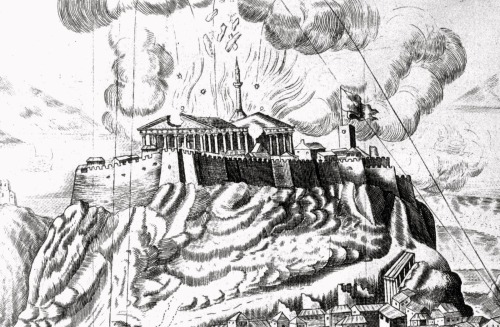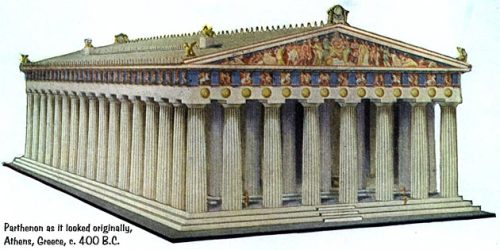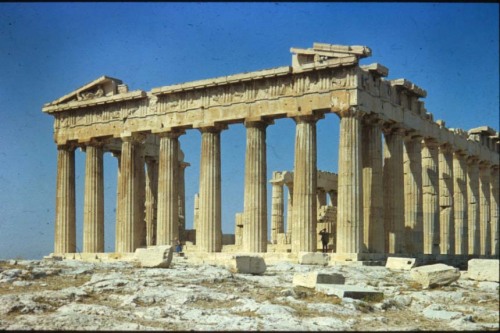peashooter85:The Destruction of the Parthenon, 1687 ADToday the Parthenon in Athens is considered on
peashooter85:The Destruction of the Parthenon, 1687 ADToday the Parthenon in Athens is considered one of the most important and impressive structures of ancient Greece. Originally built in 438 BC, the structure served a number of roles. During classical ages it was a temple dedicated to the goddess Athena. When Christianity became the dominant religion in the Roman Empire it transformed into a Christian church. When the Ottoman Turks conquered the Byzantine Empire in the 1500’s it was again transformed into an Islamic mosque. Today, however, the Parthenon is a ruin of marble columns, a shell of its former glory. This was not caused by weather or the fact that the structure is thousands of years old. Throughout most of its history the Parthenon was a well respected, well maintained, and heavily used building. So what happened to the Parthenon?In 1687 the Ottoman Empire was at war with the Most Serene Republic of Venice. On September 21st, 1687 an army of 10,000 Venetian soldiers under the command of Francesco Morisini landed on the outskirts of Athens with the intent of capturing the city as well as the rest of Greece. The Venetians laid siege to the city and began a six day bombardment with mortars and siege cannon. In their haste to defend the city the Ottoman Turks fortified the Acropolis and turned the Parthenon into a powder magazine, a storage place for gunpowder. Later during the siege a captured Turkish deserter revealed to Morisini the location of the Ottoman powder magazine. Morisini ordered the Parthenon targeted by his cannon and the gunpowder magazine was ignited by a mortar shell. The resulting explosion blew off the roof, caused the structures internal walls to crumble, dislodged 3/5ths of the structures sculptures, and destroyed several columns, mostly on the south side where the shell entered the building. The resulting blast also killed 300 Turkish soldiers. With the Turks supply of gunpowder destroyed the Venetians easily conquered the city. Then the looting began, with Morisini and his troops removing ancient treasures and statuary as prizes of war. Many statues were accidentally smashed during removal, the rest were shipped off to collections in Italy, where they eventually were scattered all over Europe.After the devastating explosion of the Parthenon, centuries of secondary destruction occurred, mostly in the form of looting. Stone masons carted off wagon loads of marble for use in other building projects and structures. In 1801 the British ambassador to the Ottoman Empire, Thomas Bruce, 7th Earl of Elgin, became fascinated with the Parthenon, studying its architecture closely and documenting its magnificence. He then proceeded to loot the Parthenon of its remaining statuary, especially the statues that make up the front façade of the building. 17 statues, 15 panels, and a large 247 foot long frieze were removed and shipped to Britain, where they were sold to the British Museum. Today the statuary, known as the Elgin Marbles, are a source of contention between the United Kingdom and Greece, as the Greeks want them back.Today the remains of the Parthenon are still under threat, especially from the slow destruction of acid rain erosion. In 1975 the Greek government began the project to preserve and restore the Parthenon, with slow painstaking work occurring over the decades. -- source link


